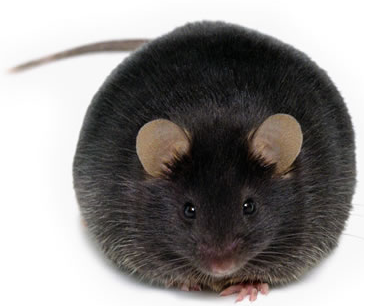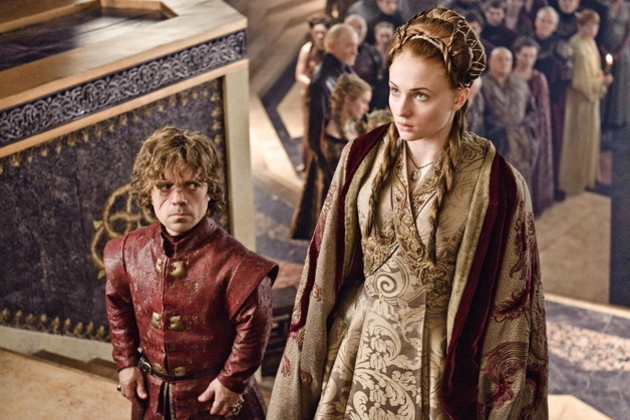
Pet Society was a Facebook game played by hundreds of thousands of people. Users raised pets and interacted with other virtual pet owners. Launched in 2008, Electronic Arts shut it down in June, explaining that it was being retired, so EA could "reallocate development resources to other titles."
This happens all the time in the world of online gaming. But this was different. This was taking away people's (virtual) dogs and cats. Former players have actually protested online.
"My wife has played Pet Society for almost five years," writes one supporter who signed Save Pet Society's petition on Change.org. "Shutting down Pet Society is like someone coming into our house and shooting one of our real cats. But wasn't that the point of Pet Society, to get you emotionally invested?"
According to AppData, when the game shut down, one million users played the game at least once a month and 500,000 played the game at least once a day. Among them was Selena Inouye, a retired "40-something" who lives in Los Angeles with her husband, three cats and two dogs. She's been playing Pet Society since 2009.
When she heard the news, Inouye sought out the Please Save Pet Society Facebook group, now almost 32,000 members strong, and quickly became an active member. She tweets, blogs and helps organize a boycott of EA products in an attempt to save her virtual pet. "Those of us who were still playing the game were like wait a minute, we don't think it's old, and we don't think it's ready for retirement, and what in the world is going on here?"
"I don't know if this is going to sound hokey," she said about her attachment to the game, "but your pet was always laughing, smiling, having a good time. The atmosphere was always very positive and uplifting, focused on being happy, and you know, In life...life is definitely not like that all the time."
Save Pet Society's Twitter profile picture is a caricature of sadness. A green, cartoon cat with big, round eyes sheds bulbous tears. Its eyebrows are raised in a pleading facial expression and its cute little paws hold up a sign inscribed with what is either a request or a call to action: "#savepetsociety."
Inouye's Pet Society pet was a pink cat. She named her Miss Hiss, after a real stray kitten she found in her backyard and later adopted. Inouye thinks the comparison between the loss of a virtual pet to the loss of a real pet is "really fair."
"I know that some people must think, wow, you people need to get a life, you're crazy, but one of EA's business partners is Disney, and people are crazy about Disney animated characters," Inouye said. "People were crazy about Pet Society too. EA has completely underestimated that, and yeah, a lot of people felt like EA was killing their pets. They gave us two months, to cope with the loss, I guess."
When I asked Inouye if she spent any money on Pet Society she laughed, a little embarrassed. "I spent...way too much money. I probably spent... probably $200."
In the social games industry Inouye is what's called a "whale," a term borrowed from the casino industry to describe big spenders.
There are a lot of other similarities to be drawn between social games and the gambling industry. Both business models often extract money from players in tiny increments and rely on audio-visual feedback to send people into the Machine Zone. In fact, a great number of social games are modeled directly after card games and slot machines.
"I'm not so offended," Inouye said after I told her about the whale designation, "but then again it makes me wonder too, if people are spending that much money on a 'free-to-play' game, how come EA couldn't keep it running?"
* * *

Pet Society was originally developed and operated by small startup Playfish. In November 2009, EA acquired Playfish for $300 million as part of its aggressive push into the then burgeoning social gaming space.
John Earner was Product Manager at Playfish at the time. He said that the game's success caught the team by surprise. "It just kept growing and growing. I remember in the early days when it made a $1000 a day we got excited. And then it made $5000, and $10,000. It went from 200,000 players to a million, which was amazing, and then it hit six million and it was the biggest game on Facebook. It was the most exciting career ride I've ever been on."
At its peak Pet Society had 50 million monthly players, 5 million daily players and made as much as $100,000 a day by selling in-game items--clothing for the pets or decorations for their houses. These were very good numbers at the time, especially for a small team of 18 people. But in the following three years Playfish exploded. Its U.K. studio alone, its central hub and the location that operated Pet Society, grew to 160 people, with almost as many marketing people as developers, and other, smaller satellite studios elsewhere in the world.
Meanwhile, competitors like Zynga started making 10 times as much with FarmVille and growth migrated from Facebook games to mobile games. From EA's perspective things stopped making as much sense.
Feeling the pressure, Playfish made a last ditch effort to save Pet Society and itself. The game was still making money and essentially funding the U.K. studio, but Playfish took as many people as it could and put them on the most promising title, The Sims Social, a Facebook version of one of EA's biggest brands.
This strategy proved tremendously successful when the The Sims Social launched. At its peak it made $500,000 a day, five times what Pet Society made on its best day, and many more times than the $30,000 a day Pet Society dropped to by then.
At that point EA stepped in and instructed Playfish's U.K. studio to hand over Pet Society to a new, small team in Hyderabad, India.
"I met those guys," Earner said, "They were very sharp, hard working, very intelligent. They very quickly understood the important aspects of Pet Society. They had a core team of five people. They spent the summer in the U.K. They got to know the Pet Society team, they took the code, they learned how to use it and at the end of the month they flew home."
The intent was to free up the more experienced developers at Playfish U.K. to make new games, and to outsource lower earning games like Pet Society to "lower cost locations".
* * *
The biggest expense in operating a Facebook game is the headcount, the people actively working on it; then there's the server costs, where the game is hosted. EA never stated plainly that Pet Society was losing money, even after the move to India, but it had long ceased being the earner it used to be. It was unlikely it would ever return to its former glory.
John Reseburg, Senior Director of EA Corporate Communications, reiterated to me in an email the general sentiment of EA's April 15 announcement, but with an additional technical detail. "A few months ago, we made the difficult decision to close down some Facebook titles where player levels had fallen off significantly," he wrote, "and the aging technology underneath the games was regularly breaking and leading to poor game experiences."
Earner concurred with the statement. Pet Society was modern at the time of its conception, but it wasn't built to scale up like later Facebook games, and, in a cruel twist, the players' enthusiasm made it a more costly operation. "At the time we didn't realize that people would own several thousand objects," Earner said, "the servers weren't architected for it, so Pet Society started having high server costs per active user."
EA is by no means the first or only company to shut down a Facebook game of this size, nor are they the first to suffer player backlash. In 2013 Zynga shut down more than a dozen of its social games, and eliminated hundreds of jobs when it closed development studios in New York City, Austin, Boston and other locations. EA "sunsetted" two other social games on the same day as Pet Society, including The Sims Social.
Yet none of these sparked an emotional reaction equal to that of Save Pet Society. One example that comes close is, fittingly, from SuperPoke! Pets. SuperPoke! players, however, could download their pets before the game ended. Offline, players could continue to interact with their pets and the items they purchased, but not with each other.
EA did not offer Pet Society players this option. Instead, EA offered them incentives to try other EA games, namely Plants vs. Zombies Adventures, which was preparing to launch at the same time that Pet Society was winding down.
"They [EA] were saying this would be the game for us to transition to," Inouye said, "and of course none of us want play it because it's the polar opposite of Pet Society...It's not all blood and guts and everything, it's not horribly violent, but it's just not the same."
"What should have been surrounding Pet Society during its last days is not neon marketing signs," Earner said. "It should have been thank you notes to an audience of millions of people that played that game for years. Instead, it was just bullshit marketing stuff. That's where they really screwed up."
* * *

Now that that battle is lost and the game is offline, Save Pet Society is focused on convincing EA to issue a Limited Use License. Such a license will allow another company to operate Pet Society at its own expense and let players back in the game, while still allowing EA to collect a percentage of the profits.
Inouye says that an executive level contact told her that EA has kept all of Pet Society's data. Should EA issue Limited Use License, players could presumably reunite with their pets, picking up exactly where they left off.
Inouye is a leukemia cancer survivor who blogs about the chronic pains caused by her condition atohmyachesandpains.info. As she rightly points out, video games have been shown to help with pain management by distracting players.
"Playing the game became an escape for me and a lot of people from the more unpleasant aspects of life," Inouye said. "It was just a really special place to go. I can think of at least three other people off the top of my head, who are living with chronic illness like me who I met through the game."
"I suspect that what's really going on is that this became a powerful way for people to communicate with one another," Earner said, "perhaps people who aren't comfortable doing it live, or just found the elements of that cute little pet instead of a blank chat more compelling... I think that what they miss is not their pets. I think they miss that community, that channel of getting to people that they love, and they're not going to get that back."
It's easy to dismiss Save Pet Society as yet another fringe group on the great and silly internet. But consider how much of who we think we are is performed in digital arenas controlled exclusively by companies who answer only to a fluctuating sea of faceless shareholders. How many hours have you spent with your World of Warcraft character? How long did your kid spend building castles in Minecraft, and what do they mean to him? How many people know you only by your avatar and screen name? Who owns the means that bind you to them and what do they owe you?
"Increasingly our world doesn't draw a line between the virtual and the real," Earner said. "That was a bright line 10 years ago, but increasingly virtual things have as much value to us as real things because at the end of the day it's about our experiences and memories. Those are the things that we hold dearly. . .
"This game is an example of what's going to be an increasing problem. If you're going to make an always-on, persistent service that people spend thousands of hours and also thousands of dollars in, what do you do with these games when they run their course? I think that what this story teaches us is that we don't have a good answer."




















































